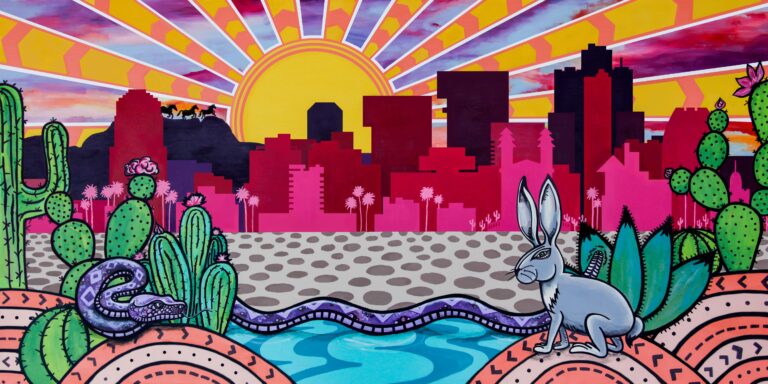Phoenix’s vibrant Roosevelt Row arts district, long celebrated for its creative energy and cultural diversity, is facing a mounting challenge as gentrification accelerates. Local artists and community members warn that rising rents and increasing commercialization are pushing out the very talents that gave the neighborhood its unique identity. This contentious dynamic has sparked a growing debate over the future of Roosevelt Row, raising questions about how to preserve its artistic heritage amid rapid urban development.
Phoenix Artists Voice Concerns Over Rising Costs in Roosevelt Row
Artists in Roosevelt Row are sounding alarms over the increased financial pressure caused by rapid gentrification. Rising rents for studios and gallery spaces, alongside escalating costs for materials and living expenses, are making it difficult for many creatives to sustain their practices in the once-affordable arts district. Several local artists report feeling marginalized as upscale developments and luxury apartments reshape the neighborhood’s cultural landscape.
Key challenges faced by Roosevelt Row artists include:
- Significant increase in commercial and residential rent prices
- Limited access to affordable exhibition venues
- Competition with upscale businesses pushing out grassroots projects
- Rising costs of art supplies due to inflation and supply chain issues
| Expense | 2018 Average Cost | 2024 Average Cost | Change (%) |
|---|---|---|---|
| Studio Rent (per month) | $600 | $1,200 | +100% |
| Gallery Space Rent (per event) | $300 | $650 | +116% |
| Basic Art Supplies | $150 | $250 | +67% |
Impact of Gentrification on Creative Spaces and Cultural Identity
Roosevelt Row, once a sanctuary for artists and cultural innovators in Phoenix, is witnessing a transformation that many argue is diluting its original spirit. The surge in real estate development and rising property values, driven by gentrification, has compelled numerous creatives to seek more affordable outlets elsewhere. This dislocation is not just a shift in geography but a profound erosion of the community fabric that gave Roosevelt Row its distinctive identity. Established studios and galleries are shuttering or relocating, while new businesses cater primarily to affluent newcomers, creating a cultural disconnect.
Artists, activists, and local residents emphasize that the space represented more than just physical venues; it was a cultural engine fueling community cohesion, innovation, and a shared sense of belonging. The consequences of this upheaval include:
- Loss of affordable studio spaces hinder emerging artists’ ability to develop and showcase their work.
- Displacement of minority-owned creative enterprises undermining cultural diversity.
- Transformation of public art initiatives into commercialized displays with limited community input.
| Impact Area | Before Gentrification | After Gentrification |
|---|---|---|
| Studio Rent | $350/month | $950/month |
| Local Art Events | Monthly community-led | Biannual, high-ticket |
| Cultural Representation | Multicultural & grassroots | Commercial, upscale |
Community Leaders Call for Policy Changes to Protect Local Artists
Local advocates and community leaders are urging municipal officials to implement comprehensive policies aimed at preserving the creative spirit of Roosevelt Row amid rapidly escalating property values. They argue that rising rents and property taxes are forcing out long-standing artists who have been integral in cultivating the neighborhood’s vibrant cultural identity. These stakeholders emphasize the need for zoning protections and affordable studio spaces that prioritize the livelihoods of local artists over commercial developers.
Proposed measures include:
- Rent control mechanisms for artist studios and galleries to prevent sudden spikes in costs
- Designation of art districts with special tax incentives for creative enterprises
- Community land trusts aimed at securing affordable spaces for artist residences and workspaces
Community leaders warn that without swift intervention, Roosevelt Row risks losing its core creative contributors, fundamentally altering the cultural fabric that once drew patrons and tourism alike.
Strategies for Balancing Development and Artistic Preservation in Phoenix
Addressing the tension between urban growth and cultural retention in Roosevelt Row demands a multi-faceted approach. City planners and community advocates emphasize inclusive zoning policies that prioritize affordable studio spaces and live-work units reserved specifically for local artists. These measures aim to ensure that as new developments emerge, they do not inadvertently displace the very creatives who gave the neighborhood its identity. Additionally, fostering partnerships between developers and arts organizations can lead to innovative spaces that blend commercial viability with cultural heritage preservation.
Creative solutions also involve dedicated funding streams for preserving public art installations and murals that visually narrate Roosevelt Row’s history. A proposed initiative includes a community arts fund supported by a small percentage of development fees, allocated directly to artist grants and preservation projects. Below is a snapshot of potential strategies being discussed among stakeholders:
| Strategy | Purpose | Expected Impact |
|---|---|---|
| Affordable Artist Housing | Prevent displacement | Retain artistic community |
| Mixed-Use Development | Integrate commercial & creative spaces | Balance economy & culture |
| Public Art Grants | Fund preservation efforts | Maintain neighborhood identity |
| Community Land Trusts | Control land costs | Empower local residents |
In Retrospect
As gentrification continues to reshape Roosevelt Row, the neighborhood’s creative community faces an uncertain future. Artists who helped define the area’s identity now worry that rising rents and development pressures will force them out, threatening the cultural fabric they helped build. The challenges unfolding in Roosevelt Row reflect broader tensions in urban neighborhoods nationwide, where economic change often comes at the expense of longtime residents and local character. How Phoenix addresses these concerns may serve as a critical test for balancing growth with preservation of its artistic heritage.







